|
n 1975, Jorge Luis Borges published a story that would materialize the dream of every bibliophile: "The Book of Sand", a book whose pages are infinite (or countless) as the grains of sand on a beach. The protagonist of the Borges tale acquires this fantastic volume of a Scottish Bible salesman who comes into his home but ends up a prisoner of that "monstrous", "diabolical" book. This is a impossible and fascinating object, – with a apocalyptic Rhys Hughes reading, in a tale of his New Universal History of Infamy – a symbol of what we desire and what feeds our worst nightmares, something that we can just drop in a place where the diabolical object will definitely miss, haunting us as a probable illusion of the senses. It is curious that the monstrous volume is not unusual: the cover showed that the book had passed through many users hands, the language in which it was written might be strange, but the typography was mediocre, the pages were worn, the illustrations were clumsy and mediocre. In a way, Borges was sensitive to a curious phenomenon – many everyday books, to a limited experience, reproduce the feel of the book of sand thanks to curious Nature dispositions. Time, for example, can waste a volume in a way that the once wonderful pages, come in our amazed fingers (that may not have touched these pages for a few years) as a brittle thing. In other way, the memory has the effect of astonishment at a book we imagine know (and that surprises us, which indicates that probably did not know for real) when certain passages that are in such and such page disappear, when new illustrations or directions emerge even in a brief, cursory reading. However, some book formats have always the tendency to emulate, of course imperfectly, the infinitude: almanachs and collections, that allowed the (re)discovery, the unexpected frisson in reading experience. But none of these methods of the Book of Sand, not a natural but perhaps a object of the possible realm (like many unnatural objects), is like this strange artifact published by Zagava/Ex Occidente Press: Infra-Noir, a multifaceted and unique compendium, the closest possible experience to the book of sand.
The title, "infrablack", seems to allude to the series of manifestos and pamphlets of the Romanian Surrealist group, which gathered in the 1940s names like Gherasim Luca, Dolfi Trost, Paul Păun and others. This relationship with the rich and complex Romanian surrealism is accentuated by the excerpt from the poem of Virgil Teodorescu (illustrated by stilamancies of Dolfi Trost), Poem in Leoparda (1940), that illustrates the book jacket, written in the "language of leopards", aural ferocity invented by Teodorescu as "language" of his poem, modeled by – as highlighted by Andrew Condous – the Dadaist Tristan Tzara experiences around the so-called "simultaneous poems" and the Isidore Isou "Letterism" proposals. The original odd poem by Teodorescu and Trost was confiscated by the Romanian authorities in 1959 and it was probably destroyed forever. Indeed he was, but not entirely: four pages were secretly saved by the wife of Virgil, Helene – from these pages, we have the section that is on the Infra-Noir dust jacket: "Sobroe vinwid tidiv toe". The strangely unreal and powerfully suggestive language of the poem appears in flawless, black typography on the all black jacket, an exquisite verse in a language unknown but perceived by mankind. On the spine, the clear indication of blackness, darkness, secrecy, threat of oblivion: the book title. This incredibly significant and complex universe, nevertheless are still the book jacket that despite its grandeur is not enough to avoid the impact of the volume content: six complete books from a wide range of poetry, poetic prose and fiction in various shapes and typography, a luxurious workmanship that includes a beautiful, disturbing illustrations and photography collection. The opening of Infra-Noir is "Smoke," a book of poems by Mark Valentine. A broad poetic composition spectrum from the vanguard of the early twentieth century – notably Surrealism, Hermeticism, Dadaism, Expressionism – informs the poems of Mr. Valentine, however marked with a very personal diction. The most obvious poetry kernels in Valentine compositions are the exile and dispersion as singular events whose occurrence is both in the dimension of the everyday and the exotic, the constant projection of other universes in the universe of our common cognition. Fountains, marble objects, obscure temples, mirrors, lost or forgotten things – this is the imagery developed by Valentine in superb poems, small masterpieces in the verge between poetry and fantasy fiction as "hark to the rooks" and "a note about hats", poems about the loss of identity by the pressure of Nature and by the pressure of political systems. The second book is "Inflammable Materials", written by the Danish author Thomas Strømsholt, whose approach is also poetic. However, it differs from the experiment by Mark Valentine: this is another poetic tradition, the little prose poem, a form that has reached some considerable degree of sophistication in the hands of authors such as Edgar Allan Poe, Charles Baudelaire, Oscar Wilde, and Franz Kafka. Strømsholt attacks this poetical genre with wit, cunning, intelligence and engagement, working the allegorical narratives with the small chisel of meaning multiplication – the very mystery of open allegory are the essential aspect of a little prose poem. In this sense, some very effective aftermaths are achieved by the author, notably in the poem "The Glowing Heart", a Wildean gem in which a pagan Inquisitor, also philosopher and poet, confronts a Christian saint, with revealing results for both of them and, of course, for the reader. The third book in the Infra-Noir wilderness, "The Unfolding Map" is a short novel by John Howard. It is a masterpiece of the mixture between Historical Reality and the todorovean Fantastic – a projection and philosophical speculation, very usual in other works of the author. But due to the conciseness and accuracy, this refined piece approached to the fictional best works created by H. G. Wells, Henry James or William Gehardie. In the plot, we follow the meetings of a group headed by a Nazi leader scheduled for Berlin in negotiations about borders, always a moving target, between Romania and Hungary in the 1940s. The discussions take place in a fictional and refined restaurant, located in a Romania fictional town – but each of these elements could be or perhaps would be real. This changing appearances are at the core of the plot and the happening at the climax is at the same time supernatural, magical, possible, perhaps indefinable. The fourth book closes the poetic half of Infra-Noir: "Soot", by Dan Watt, with illustrations by Andrzej Welminski. Watt built a prose fueled by strange confluence between humanity and its small mechanical devices, made to obsessively rebuild and cut an often gray, stony, suffocating reality. The name of the game, here, is deception: between forms captured by the senses and exposed at its heart in the poems of Watt and the Welminski illustrations. Thus we have characters who guess oddities carried by others, a circus that reverses the role of spectator and spectacle, unusual rituals for rare books, mystical transformations. The fifth book is "The Salamander Angel" by Damian Murphy, another novel, this time with a curious structure of multiple characters and viewpoints. It is a very appropriate format, considering the fact that the plot presenting multiple views of a single apocalyptic event, though perhaps invisible. The prose of the Murphy’s novel follows an obscure and even occultist approach, with references to Theosophical and Hermetic rituals and practices. The visions of intertwined characters reach an amazing, unbelievable climax imagery, with a statue transmuted to apocalyptic angel(s) transmuted to a fragment of lodestone, a symbol that serves as a kind of unifying image. The last book, a novella, "The Slaves of Paradise" by Colin Insole. This Insole fiction takes place during the years of Nazi occupation of France, with the strange and ambiguous mixture of everyday life that followed the usual course and the requirements imposed both by the collaboration and resistance. This universe, in the plot is materialized by the film backstage, very appropriate to illustrate the many ambiguities of France under Nazi occupation. The motif of involuntary betrayal and deliberate deception – revealed as an act of overwhelming perversity – are central in the novella, with subtle cinematic resonances: I am spotted references to the films The Seventh Cross (1944) directed by Fred Zinnemann and Les enfants du paradis (1945) by Marcel Carné. But this work does not limited itself to the homage of its rich cultural and historical sources, so that "The Slaves of Paradise" is another precious gem within the Infra-Noir and a contemporary chef d’oeuvre. The Romanian surrealists was a largely obscure or lost group, adherent to the dark, underground, even forgetting materials as methodology and weapons of resistance to Fascism and Nazism and Stalinism – in some way, this new Infra-Noir book are worthy of that tradition. But the dark and forgetting materials are a ambiguous strategy, which also looks set to some downfall in its new incarnation: a real literature event in the second decade of this twenty first century, the publication of a incredible body of works that are assembled in Infra-Noir is in danger of becoming a footnote of some magazine or journal or website, the everyday media usually focused on the narration of the small and large disasters of mankind. But is not what we might expect from something so monstrous and so magnificently beautiful as a book of sand?
1 Comment
Writer, researcher, collector, Andrew Condous blended reality and fiction, literature and bibliophilia in his book Letters from Oblivion, focused on the Romanian publisher, specialized in avant-garde works of authors such as Gherasim Luca and Dolfi Trost, Les Éditions de L'Oubli. This is a exquisite work, a mixture of historical accounts, memoirs and fiction about real books and authors that seem coming out crazy fictional extrapolation and utopian books palpable as the matter of all dreams.
The early twentieth century avant-garde, in a way, established a utopian internationalist possibility, which contradicted some nationalist mythology grown strong since Romanticism. This possibility is evident in your book, as in the political obscurantist processes (the Fascism and the Stalinism) made it impossible the cultural universe in which the Romanian surrealism was a reality. In this sense, this element about another possible History in Europe, which led you to write Letters from Oblivion? If not, what would be the prime motivator? The prime motivators initially were more simplistic before extending into exactly what you envisage. One initial prime motivator was to produce an unprecedented historical account, an account where most of the factual events, locations and some of the publications were never before documented and to include some reference to people that have not been previously associated with the Romanian Surrealism movement. That is, to make the book a unique supplement to the history of Romanian Surrealism. Hence I purposely avoided including what was already known and documented apart from what was absolutely necessary to give relevant context. This historical account also served to renounce the assertion that Les Editions de L’Oubli was a fiction and to dispel the mystery surrounding this publisher. I was also motivated to highlight one particular author who was not directly within the Romanian Surrealism movement but had interactions with them and their publishers. An author who has been particularly neglected yet I predict this will change in the future. When I first discovered this author many years ago, it felt in a sense similar, I suspect, to what the French Surrealists experienced on their discovery of the works of the Comte de Lautréamont. The other motivator is more personal. Some of the events referred to in Letters from Oblivion were in fact first hand witness accounts, relayed to me (with extreme passion) years ago by someone who was within Bucharest at the time and who interacted with the Romanian Surrealists, other writers within the Romanian avant garde and the publishers. He was astonished by the symbiotic relationship of the intense creativity and widespread destruction of war time Bucharest that marked the literary output of the time. I desired to document some of these accounts, in effect a form of anonymous memoir, and this book was the perfect medium for doing so. Of course I also felt that there was a need to give some proper perspective on Les Editions de L'Oubli's relatively recent resurrection especially given the quality of the works being published pursuant to this second phase. Letters from Oblivion has a very interesting and dynamic and intricate structure: it is the recovering of an editorial experience (Les Éditions de L'Oubli at Bucharest in the 1940s), indeed, but this does not restrict the plot only to a catalog function. Poetic and narrative flows coexist with the functionality of historiography. What guided you toward this synthesis? There was a need to provide some texture and colour to the books in question and their contents, the atmosphere of the time and the personalities involved. Rather than simply inserting elaborate details about these aspects I thought it best to provide some fictional prose that attempts to reflect and condense these elements. Importantly, the mix of fact and fiction is also a reflection of the incorrect perception people had of Les Editions de L’Oubli itself. The brief and intense Les Éditions de L'Oubli period of production, both in terms of editorial and artistic excellence, would possess some parallel in Romania itself? There were other publishers and publishing traditions who have embarked on similar adventures? On a general level I would include within the category of editorial and artistic excellence most of the publishers that were associated with the Romanian avant garde and some earlier lesser known movements that involved the Romanian Expressionists, Symbolists and Decadents both in terms of published books and journals/magazines. There are many publishers and journals that could be named (Unu and Alge are probably the most noted journal examples) and it is not limited to small publishers and would include some of the large publishers such as Socec. The various publishers in Craiova should also get a mention in particular during the period when restrictive publishing laws in Bucharest were put in place and enforced. Special mention should also be made for the magazines of the Romanian Symbolists especially those that are associated with Macedonski such as Flacara and Versuri si Proza. Such editorial and artistic excellence in Romania has not ceased and an obvious example, (and I can assure you this is an objective view formed a few years ago) includes the publisher of Letters from Oblivion. In Brazil, a group of avant-gardists – who called itself "anthropophagous" – overthrew picturesque view and the conventional exoticism applied to tropical countries, employing these two biased concepts as weapons for aesthetic production. Was there something analogous in the Romanian avant-garde production which you research, maybe something related to the Romanian geographical position "in the very the limits of the West"? How was the World view about notions of exotic and picturesque in authors such as Trost and Luca and when this kind of concept were eventually applied to them? It is interesting you mention the “anthropophagous” and with reference to its core Group of Five members it immediately springs to mind some parallels with the Romanian Surrealist “Group of Five” even though their respective manifestos, pursuits, artistic/literary works and cultural contexts differ in material ways but not completely, especially in respect to some of the underlying theoretical influences of the respective groups (eg Breton, Freud, Picabia etc). A comparative analysis would make a complex yet interesting topic to explore. I am unsure whether Romania's geographical position per se was a significant factor but rather the perception of its capital city, the perception that it was an exotic version or in a way the extravagant younger sibling of the grand city of Paris, "the Paris of the East" as it is commonly called. However within literature this comparison is relevant in many ways but not in terms of internationalisation of literature. Few Romanian authors, and this for example includes Tzara, Eliade, Cioran, Ionesco etc and also to a lesser extent some others like Luca, Naum, would be well recognised by the foreign readership. However most Romanian authors across all the various literary movements, and this includes the other members of the Romania Surrealism group, remain exotic. More generally, the western, exotic or picturesque aesthetics is evident for other avant gardists (e.g. constructivists, expressionists) like Scarlat Callimachi, Horia Bonciu, Aron Cotrus etc more so that the Romanian Surrealists. To most foreigners, Romanian Surrealists as with the avant garde more generally and for that matter the city of Bucharest as well, continues to have a strange and bizarre allure, beauty and quality but to be revisited only occasionally as one would visit a museum to catch another glimpse of an intriguingly unusual, different and excitingly strange object. Andre Breton once observed “the centre of the world has moved to Bucharest”. To me and some very few others outside of Bucharest, this “centre of the world” has not necessarily shifted in certain respects. One of the facts that we noticed while reading your Letters is about the significance of building networks to the avant-garde cultural production in the Twentieth Century, with publishers and magazines constantly connecting authors, readers, reviewers, etc. In this sense, Les Éditions de L'Oubli is exemplary. To what do you attribute the success of this network of connections in the case of a Romanian small publishing house in the 1940s, during the Second World War? The success here is very much attributable to the owner of the publishing house highlighted in Letters from Oblivion and his wife. It was this small team and their connections with the writers of the Romanian avant grade, printing presses, stationary suppliers, the postal system, the various "secret societies" that formed etc that allowed the publication and distribution of the works. With an extraordinary level of effort, stealth and ingenuity they accomplished what could be viewed as almost impossible. Certainly what they undertook was very brave especially within the context of an extremely dangerous and evolving environment. In addition it is important to acknowledge the preceding Romanian Symbolist movement (involving Minulescu, Macedonski, Maniu, Bacovia, etc) and the connections and structures they established which was an essential base for the interconnections that were evident during the subsequent avant grade period. Although Gherasim Luca became a relatively well-known author, translated and published, the same is not true with many of his fellows (Trost, Teodorescu, etc.). In this sense, the language would not be an impediment, since Trost – as Luca – also wrote in French. What, in your opinion, was the reason for this unjust oblivion?'' Of the five Romanian Surrealists only Gherasim Luca and Gellu Naum have gained some form of international recognition. Dolfi Trost, Paul Paun and Virgil Teodorescu have remained relatively obscure. This is true. However, even in the case of Luca and Naum, their earlier works remain to some extent obscure or neglected. For example, in the case of Luca his pre-war works in particular have been subject to a surprising level of neglect. Almost all of these works are written in Romanian hence language may have had some influence. For instance, there are a number of extraordinary works written during the 1930's that were contained in the various journals and magazines of the time some of which have been completely forgotten (some of these journals are referred to in Letters from Oblivion particularly within the context of The Outlaw). A more obvious example is the relative obscurity of his first two publications, the infamous (at the time) Roman de Dragoste and Fata Morgana published in 1933 and 1937, respectively. However this theory that language may have been a factor is discounted by the attention afforded to his two Romanian books published by Editura Negatia Negatiei Negrata. In Luca's case (and also Naum) I would argue scarcity of the works in question as the main factor for neglect of the earlier works. In the case of Dolfi Trost, the neglect afforded to him cannot be attributed to the language he used since (as with Luca) he predominately wrote in French during and post the Romanian Surrealism group period. Today he is predominately known for one or two artistic techniques rather than his writing (apart from the co-authorship of The Dialectic of Dialectic) which is unjust given the quality and importance of the works he produced (in particular those published by Les Editions de L'Oubli and Infra Noir). A possible reason could be that he lacked the level of connectivity within the Parisian circles that others such as Luca had. However this is relevant only to a limited extent especially given he published two works in the early 1950's in Paris (Visible et invisible and Librement mécanique). I think ultimately, Dolfi Trost's obscurity predominately relates to a combination of his decision to settle in the US and cease writing (unlike Luca who continued to write and publish in Paris until his death) and the scarcity of his early works published in Bucharest. It is my belief that Trost’s obscurity as a writer may have been significantly less if one particular extraordinary work mentioned in Letters from Oblivion that he co-authored with Luca did not “disappear”. [Note: the title of this book would be L'Invisibilite d'une reve, "The Invisibility of a Dream"]. Paul Paun and Virgil Teodorescu's neglect is most probably attributable to the fact that they never published outside Bucharest (with the exception of Paun's last work published in Israel) although again, scarcity of their earlier works would have some relevance. Virgil Teodorescu however would not be considered obscure within Romania given his ongoing output and decision to remain in Bucharest. It is my sincere hope that the three neglected Romanian surrealists do become discovered and translated since their powerful works are an important contribution to the Surrealism movement. Arguably, Trost, Paun and Teodorescu had written at least one work that could possibly be designated to be amongst the masterpieces of Romanian avant garde literature in the first half of the last century. Something in your book brought to my mind the narrative form of a documentary film – a fact recording, but also a meditated formal construction. This form makes your work a variance with the editorial line taken by Ex Occidente/Zagava Press, focused on fiction, though curiously keep a close relationship with other equally unique books in the catalog of this publishers (perhaps the best other example in this historical/fictional crossing ways could be At Dusk by Mark Valentine). Do you intends to retake this approach in future books? What are the possible subjects? Or try perhaps fiction? Yes I do intend to take such an approach but in varied forms. Currently I am writing a faux essay incorporating the fiction and theoretical works of Maurice Blanchot pursuant to a future homage on this author to be edited by Dan Ghetu and Dan Watt and published by Zagava / Ex Occidente. In addition I am also in the initial stages of a couple of other ambitious projects. One involves the topic of cross-fertilisation or cross-pollination of the European and Latin American avant garde and surrealism movements. In this work, each chapter will be dedicated to one Latin American or European author that was physically located at some stage in both Continents. It will be both a trans-continental historical survey and analysis but infused with a fictional account. As the book progresses, the level of obscurity of the author in question increases. The most important and challenging book that I am working on will be the second volume dedicated again to the procurement or extrapolation from "Oblivion". It will consist, as a central concept, a unique and unprecedented approach to the works of Fernando Pessoa. It will be called "Fictions from Oblivion". Below, a "entoptic" engraving ((in other words, a picture made from the color irregularities present on a sheet of paper) by Dolfi Trost, illustrating his book Vision dans le Cristal, Oniromancie obsessionelle (Et neuf graphomanies entoptiques), published by Les Éditions de L'Oublie in 1945. |
Alcebiades DinizArcana Bibliotheca Archives
January 2021
Categories
All
|
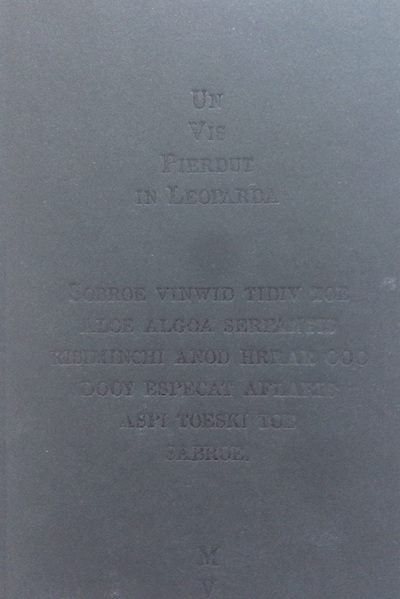

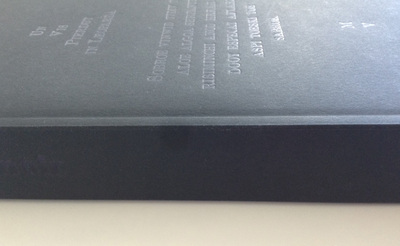
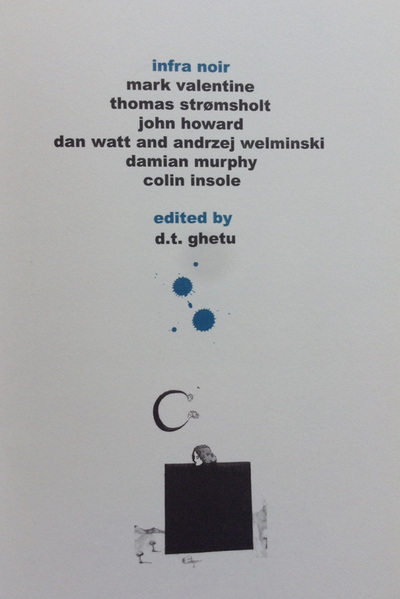
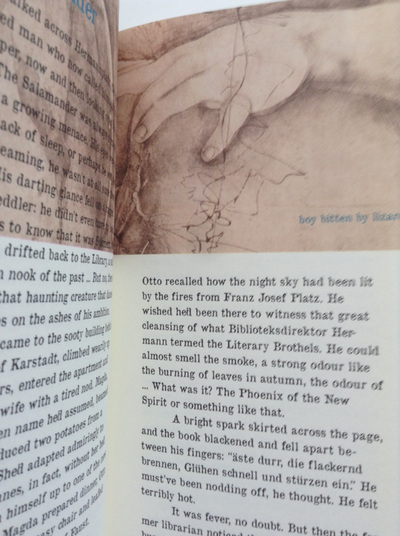
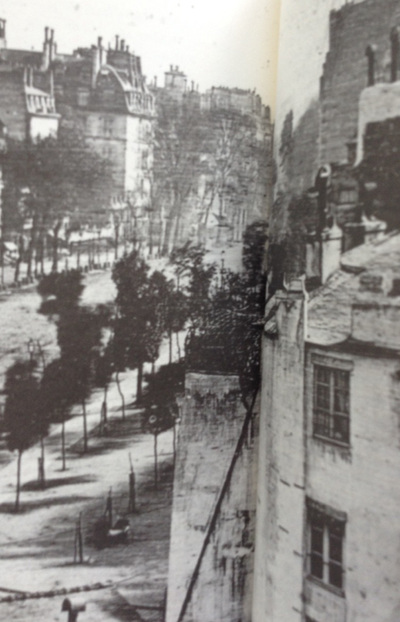
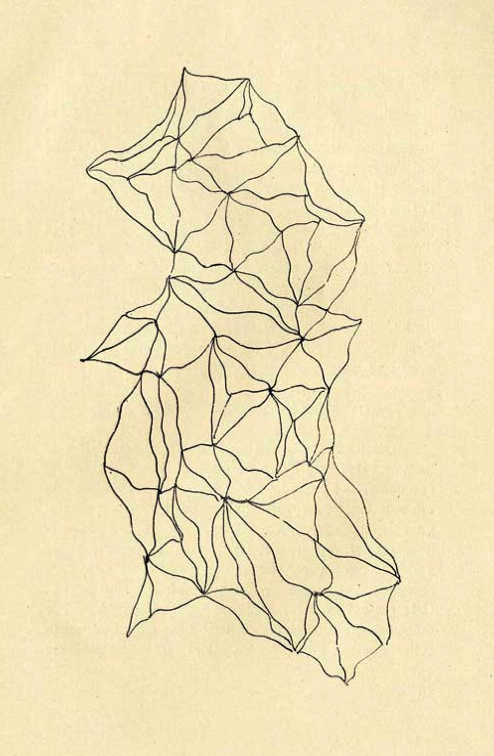
 RSS Feed
RSS Feed
